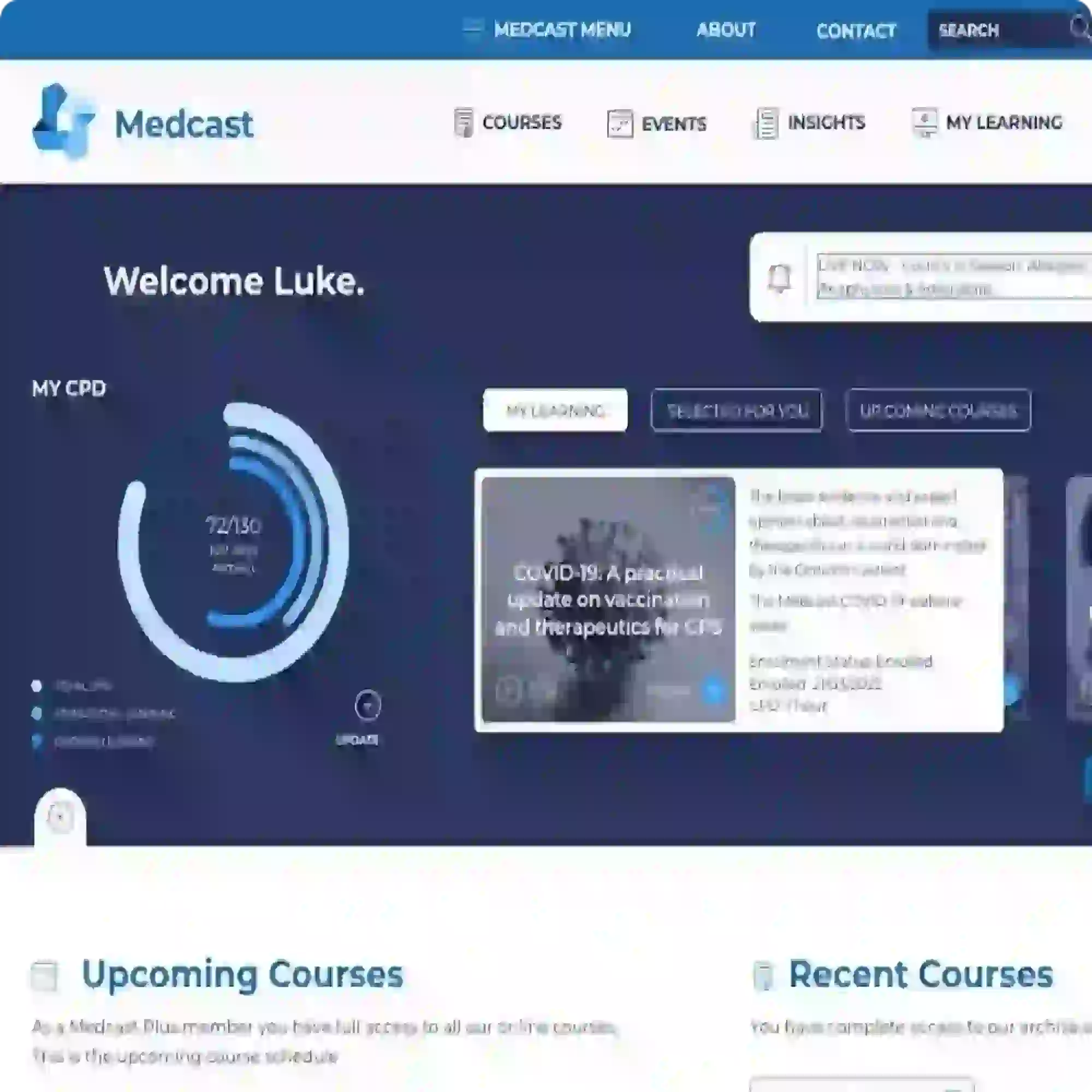Modern Gout Management: Dispelling Myths and Embracing Best Practices
This video series provides a comprehensive overview of modern gout management, highlighting key advancements and addressing common misconceptions. It covers topics such as:
-
Optimal colchicine use: Learn about the benefits of low-dose colchicine in preventing flares, especially during initiation of urate-lowering therapy (ULT).
-
Treat-to-target approach: Understand the importance of serum uric acid monitoring and escalating ULT (like allopurinol) to reach target levels, ensuring optimal gout control.
-
Allopurinol hypersensitivity: Gain insights into genetic testing for HLA-B*58:01, particularly in high-risk populations, to mitigate the risk of hypersensitivity reactions.
-
Debunking misconceptions: Dispelling common myths about gout management, such as stopping ULT during flares and relying solely on diet.
-
Patient education and resources: Emphasising the importance of patient communication and highlighting valuable resources like QHUB, Medcast and Arthritis Australia, including culturally specific materials for First Nations people.
This is an essential resource for healthcare professionals and individuals seeking to enhance their understanding of effective gout management.
This video outlines the significant advancements have been made in the treatment of gout over the past two decades. Including reduced reliance on high-dose colchicine, prophylactic colchicine, treat-to-target approach, gradual dose escalation, and genetic testing. These strategies have improved the management of gout, leading to better outcomes for patients.
This video addresses common misconceptions about gout treatment:
-
Stopping uric acid-lowering therapy during a flare: It’s unnecessary and potentially harmful to stop medications like allopurinol during an acute gout flare. Instead, treatment should continue while adding acute treatments.
-
Caps on uric acid-lowering therapy doses: Limiting therapy doses, such as stopping at 300 mg, can prevent patients from achieving effective results. Doses should be adjusted until target uric acid levels are reached.
-
Diet alone can reverse gout: While diet can help manage gout triggers, it is rarely sufficient to reverse the condition, especially in those with clinical gout. Early initiation of medication is essential.
-
Gout flares indicate underlying issues: A gout attack reflects a significant uric acid burden, highlighting the need for comprehensive treatment to address the root cause.
This video discusses the treat-to-target strategy which is central to modern gout management, focusing on lowering serum uric acid to specific levels to prevent gout and related complications. By maintaining regular monitoring, adjusting doses as needed, and working closely with patients, long-term success in managing gout is achievable.
Some patients may hesitate to start lifelong treatments, but this is common in medicine, as seen with therapies like antihypertensives and statins. The key to addressing this is clear communication about the long-term benefits.
Similarly, with uric acid-lowering therapy, it's important to emphasize not just the immediate benefit of reducing gout flares but also the long-term advantages, such as preserving joint health and improving cardiovascular and renal outcomes. Highlighting these broader health benefits helps patients see the therapy as a way to enhance their overall well-being, not just a treatment for gout.

